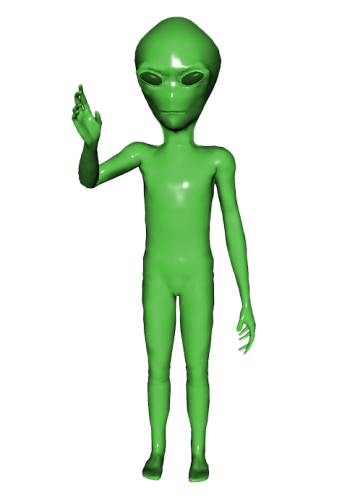By Tushna Commissariat

Just called to say hello?
(Wikimedia Commons/Crobard)
There’s nothing quite like mentioning extraterrestrials or aliens to get us “Earthlings” all excited or riled up! Late last week, a paper popped up on arXiv, by astronomer Alan Penny from the University of St Andrews. He outlines an incident where, for a short while, the possibility of alien contact was seriously considered. He was talking about what was ultimately the discovery of the first pulsar; but at the time the researchers couldn’t help but wonder if they had come across the first “artificial signal” from outer space.
The exciting happenings began in August 1967, when Jocelyn Bell Burnell (then a graduate student working with Antony Hewish – controversially, only Hewish won the Nobel prize for the pulsar discovery in 1974) at the University of Cambridge, noticed a particular source that had a “flickering pattern” that, over a few weeks, she realized showed up regularly each day at the same sidereal time. That December Bell pinpointed the specific position of the source in the sky using another telescope and the discovery was confirmed. In the coming months, three more similar patterns were found and the researchers agreed on “pulsating stars” or pulsars being the source. But during those winter months, the possibility that they had encountered the first alien signal loomed large. In fact, Brunell and colleagues dubbed the first pulsar LGM-1 or “Little Green Men”; although it was changed to CP 1919, and is now known as PSR B1919+21.
In a later article, Brunell said that she and the rest of the team “did not really believe that we had picked up signals from another civilization, but obviously the idea had crossed our minds and we had no proof that it was an entirely natural radio emission”. She continues, “It is an interesting problem – if one thinks one may have detected life elsewhere in the universe, how does one announce the results responsibly?”
This is the main subject that Penny tackles in his paper. He talks of researchers put into a position where they had to seriously consider how to tell the world about what might have been an alien signal. His paper contains some first-hand recollections of the people involved in the field at the time, including himself – he was a final-year undergraduate student at Cambridge in 1967.
Penny points out that a lot of the discussion the team had on how to confirm and release their potential finding ultimately agreed with the international guidelines that now exist in the form of SETI’s Detection Protocol – first agreed upon in the 1990s. But Penny also considers the fact that a Reply Protocol – an answer or response to an artificial signal – although proposed, was never agreed upon.
In the light of the numerous exoplanets being discovered by Kepler and other missions, it might just be a good (if slightly too optimistic?) idea to take a new look at these protocols. If nothing else, it might make BBC executives feel more confident in allowing Brian Cox to point a telescope in the general vicinity of an exoplanet.
I don’t believe anyone should announce they have found intelligent life unless an intelligible signal can be discerned or that some encounter definitively proves intelligent life.
However I do hope that we are not alone in the cosmos. We should be cautious in approaching advanced intelligent life.